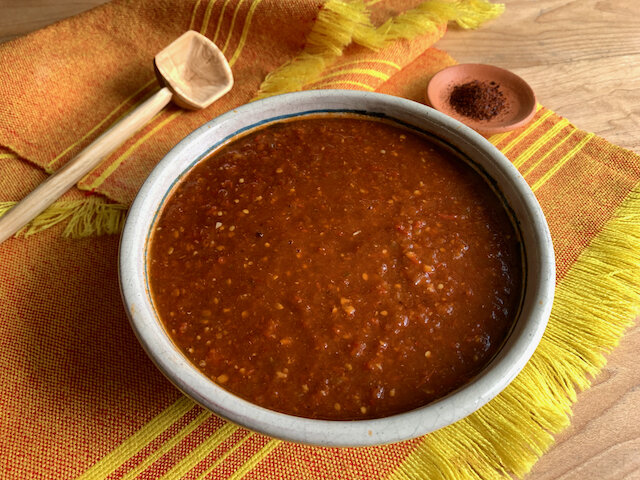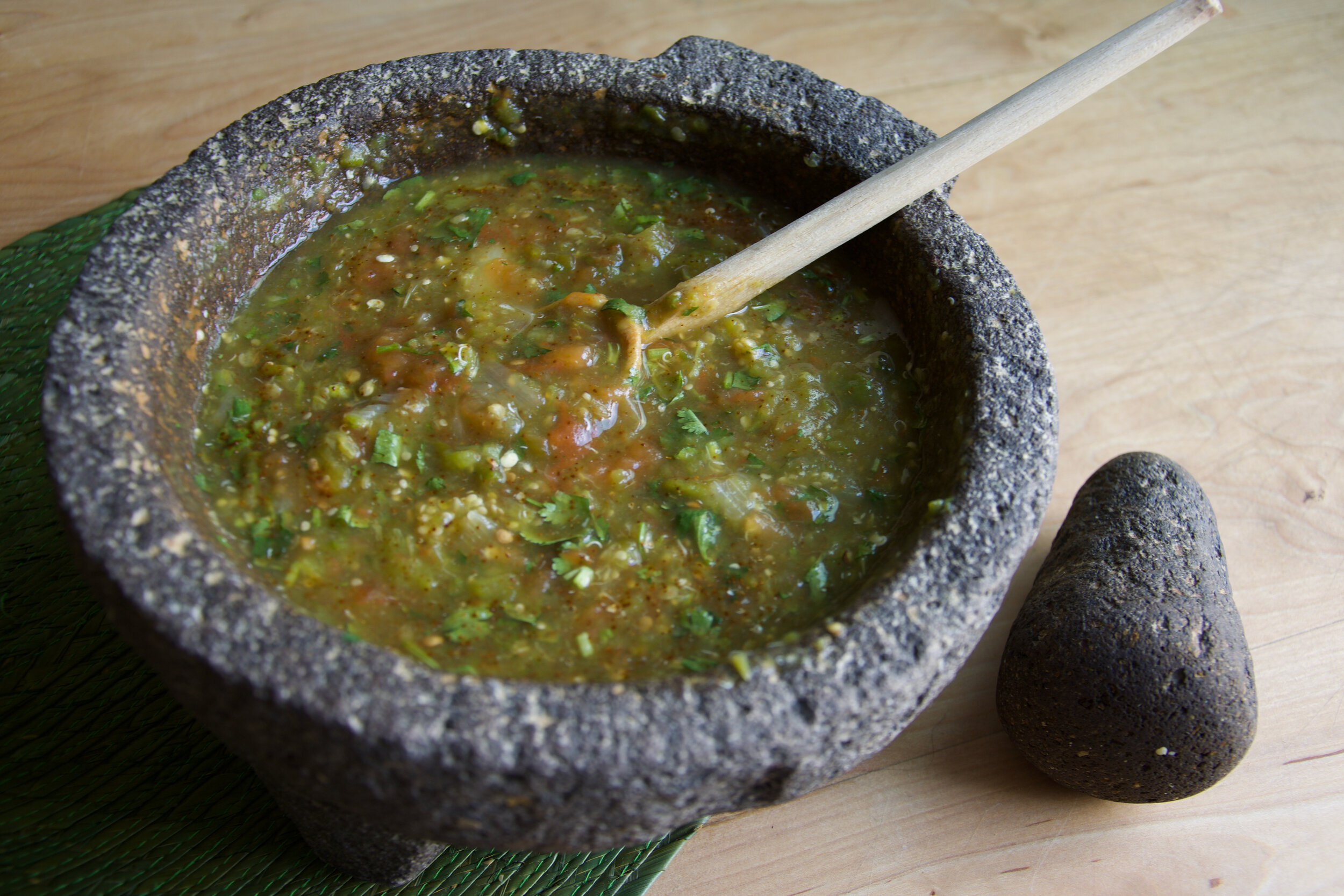As the weather gets cooler in my part of the world, I crave warming, comforting food. And usually, what I crave first will be food from my beloved Mexico. This dish is a specialty of Guadalajara, Jalisco. When you think of it, it has the least imaginative name on the planet, but the dish itself is heavenly. Tender meat strips, simmered in brothy salsa are served alongside whole beans in their juice, and this makes the combination a delicious kind of “soup”.
In Guadalajara, Jalisco, back in the year 1965, there was a hot dog vendor named Juan José Galvez Ceballo, whose nickname was “el Gallo”. As the story goes, he was the one who invented this dish and started selling it to party-goers late at night. Soon, everyone forgot about his hot dogs and the beef in its juices became very much sought after. Nowadays, it is an iconic part of the gastronomy of Jalisco, and a trip to Guadalajara is not complete unless you try Carne en su Jugo in a restaurant or two.
The origins of this dish are very humble, simply a mix of meat and beans with their broth, garnished with bacon, onions and cilantro. Humble or not, this dish has evolved, and different cooks make it in slightly different ways, but the end result is always delicious.
I like to make mine with a rich beef broth to deepen the flavour of the meat, combined with a salsa made with tomatillos and tomatoes to add a touch of acidity. This balances the flavours and the end result is a perfect marriage of beans, meat and broth. Typical garnishes are chopped onion and cilantro, which is a favourite of all Mexicans, as well as avocado slices, grilled or pan-fried spring onions and tortillas. If you can, serve this dish in a clay bowl. Just like in Jalisco.
Carne en su Jugo
Beef in its own Juices
375g bacon, cut into ¼” slices crosswise
1 kg sirloin tip roast, cut into ¼” slices and then cut into thin 1” strips
1 cup beef broth
6 small tomatillos, quartered
1 hothouse tomato, cut into chunks
1 small onion, cut into chunks
2 cloves garlic, peeled
½ cup cilantro, chopped
1 tsp kosher salt, or to taste
6 cups cooked whole pinto beans in their broth
Garnish:
1 lime, cut into wedges
2 avocados, cut into slices
12 grilled or pan fried green onions
1 small onion, minced
1 cup salsa of your choice
½ cup chopped cilantro
Cooked bacon (see above)
Tortillas
In large Dutch oven, over medium heat, cook bacon, stirring until almost crispy, about 8 minutes. Remove with a slotted spoon to paper towels and reserve for garnish. Remove all but 2 Tbsp bacon fat from pot and add meat all at once. Stir to coat in fat, reduce heat to medium low and cover pot for 5 minutes. This will make the meat release its juices.
While meat is simmering, Place beef broth, tomatillos, tomato, onion, garlic, cilantro and salt in blender. Process until very smooth. Add this sauce to the meat and stir well. Let meat simmer, partially covered, for about 20 minutes, or until meat is tender. Correct seasonings.
In another saucepan, warm up the beans and broth. To serve, ladle 1 cup of beans and broth into a bowl. Add a ladle of meat and sauce to the same bowl. At the table, let your guests garnish with the reserved bacon, avocado, onion, cilantro, and salsa. Serve grilled onions and tortillas on the side.
Serves 4-6.





















